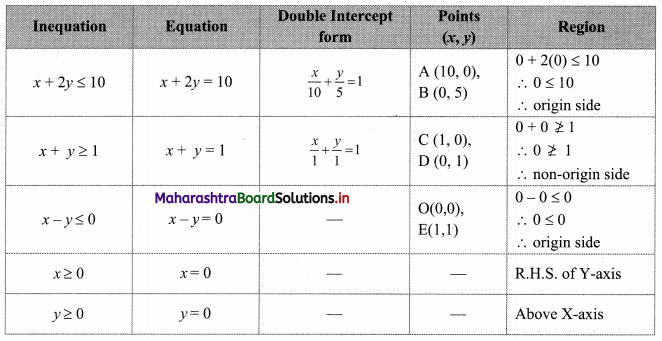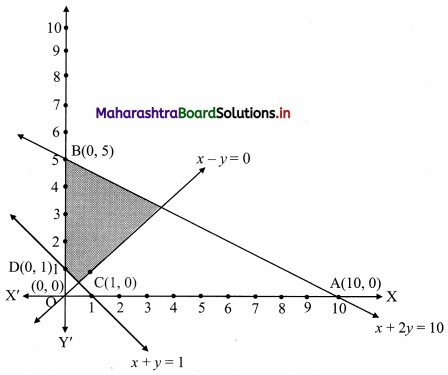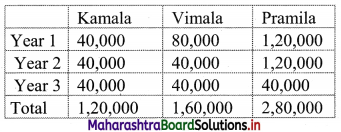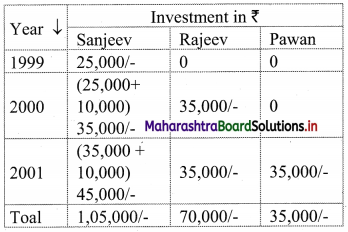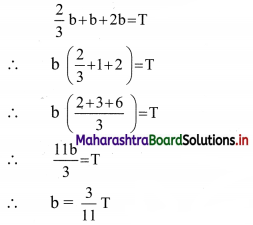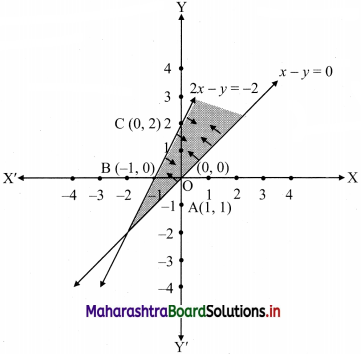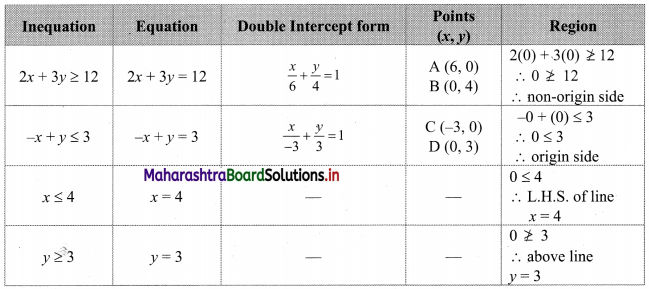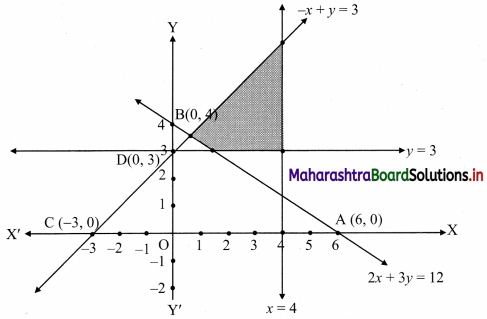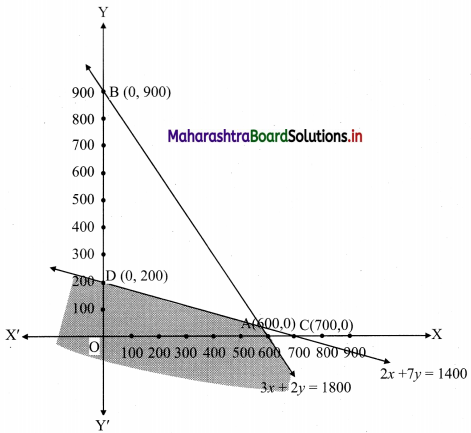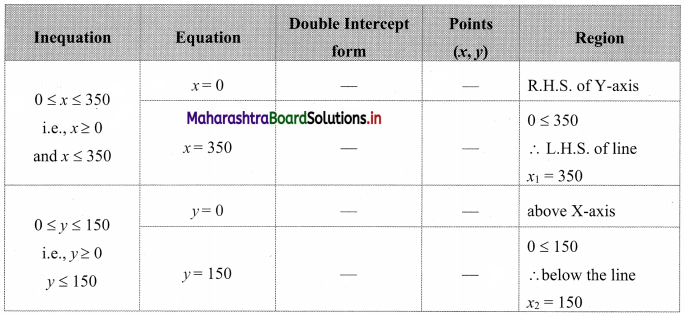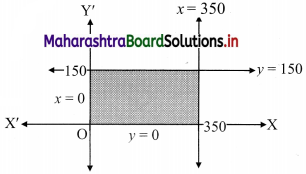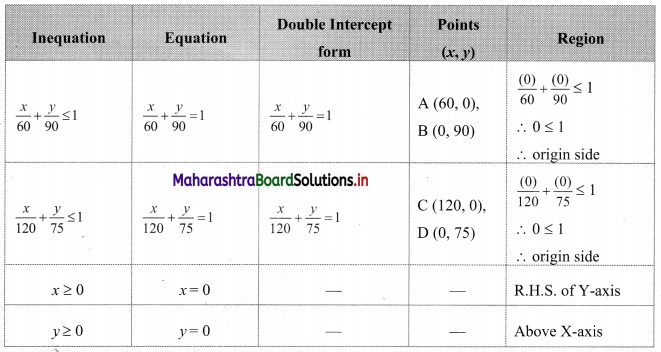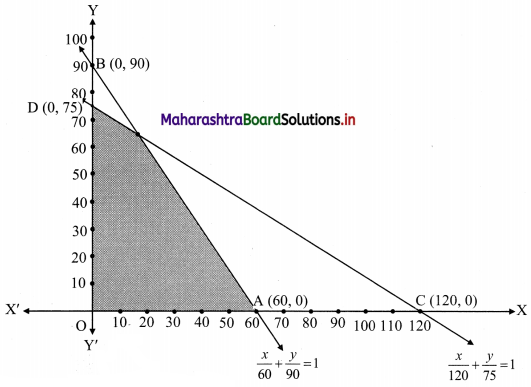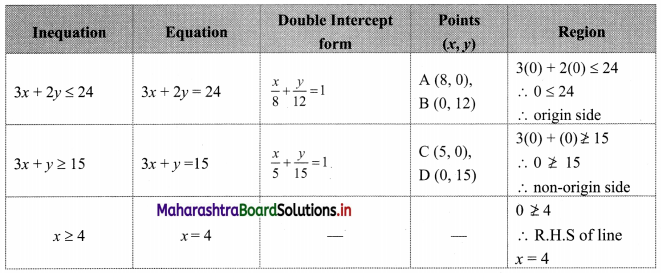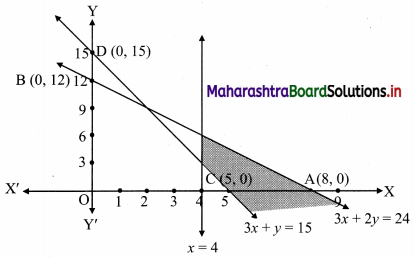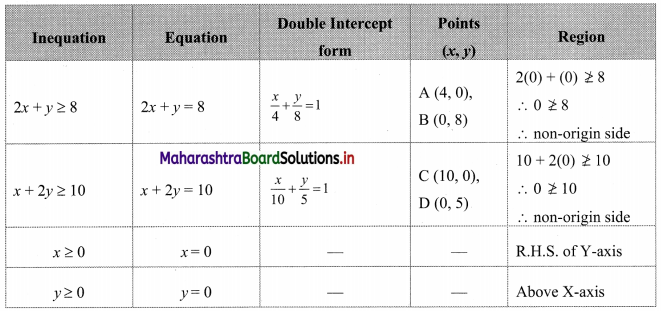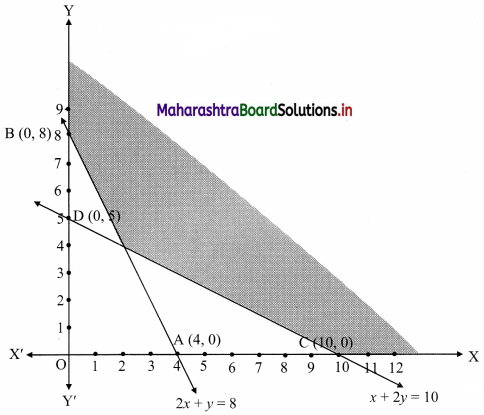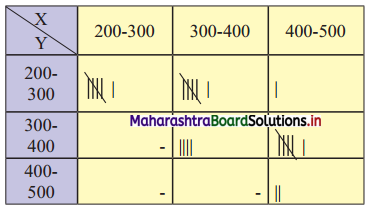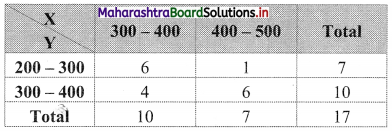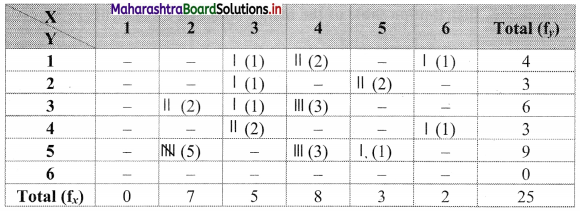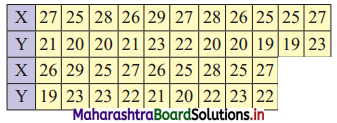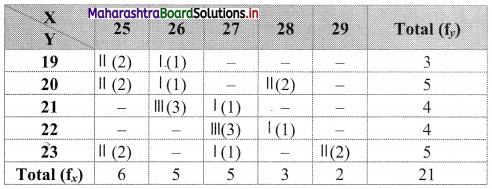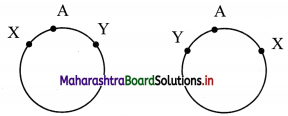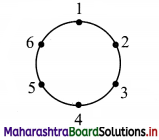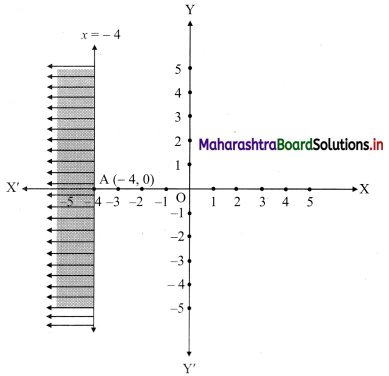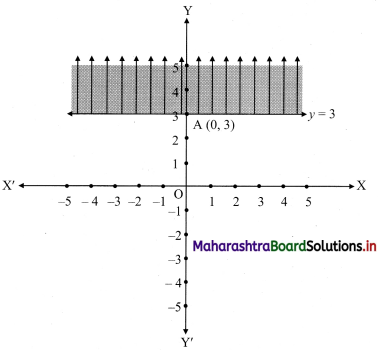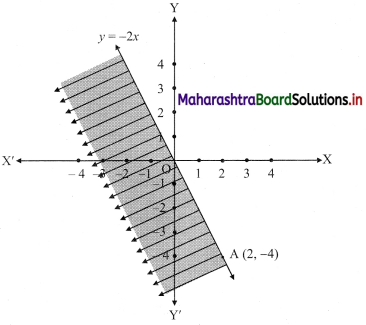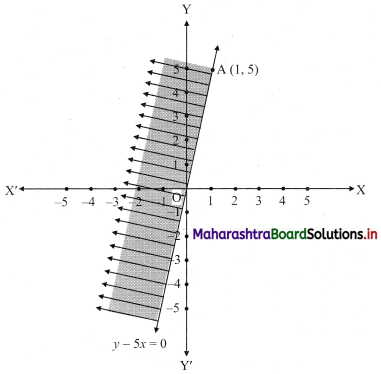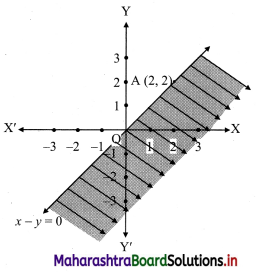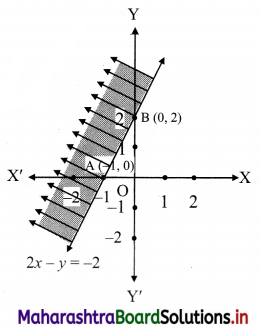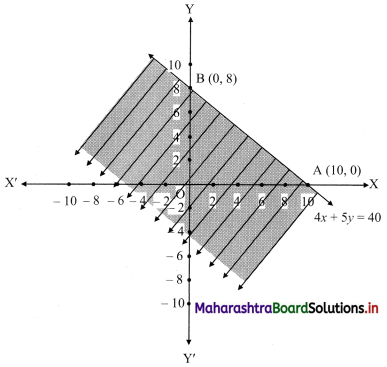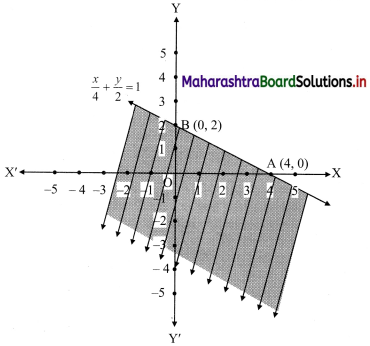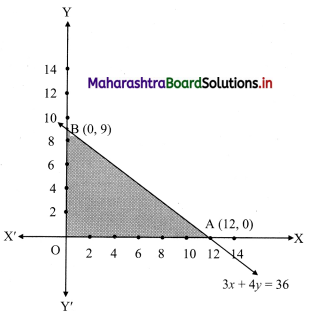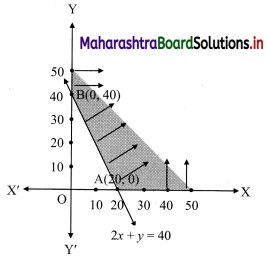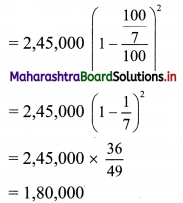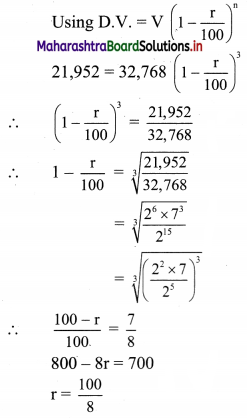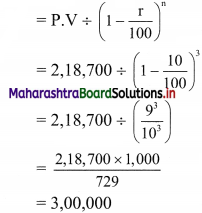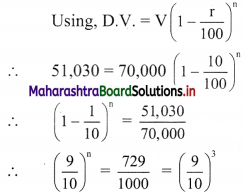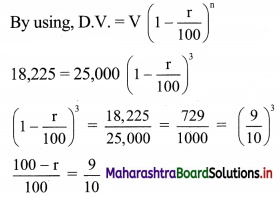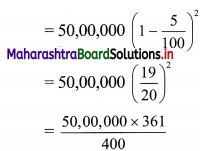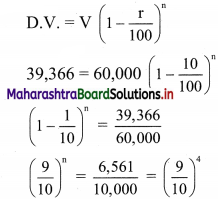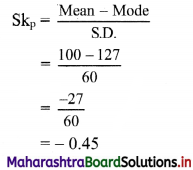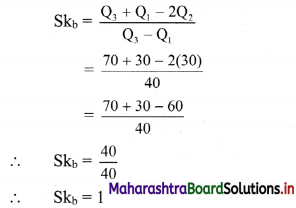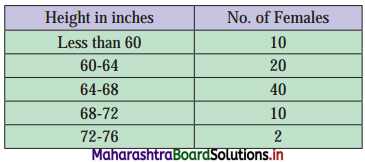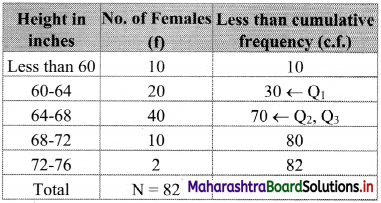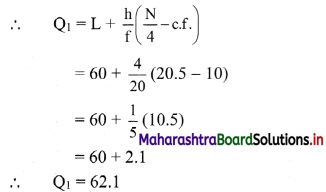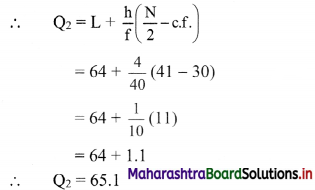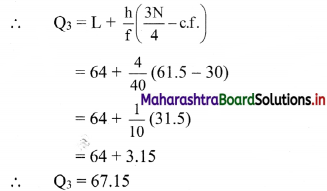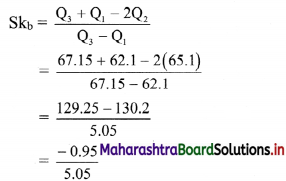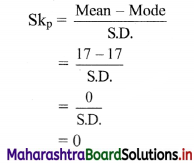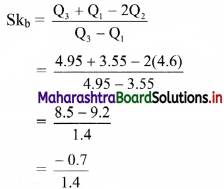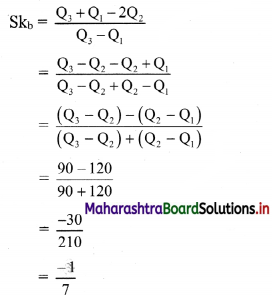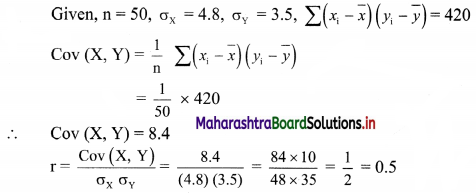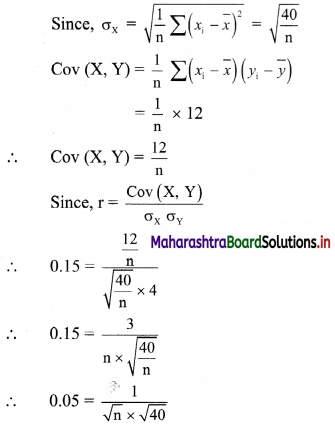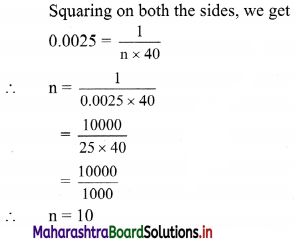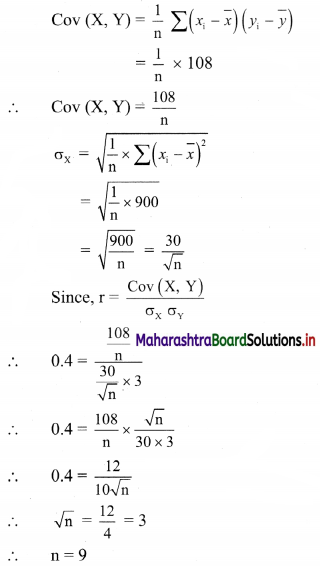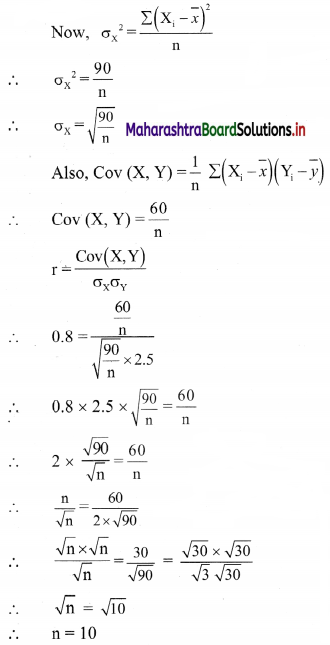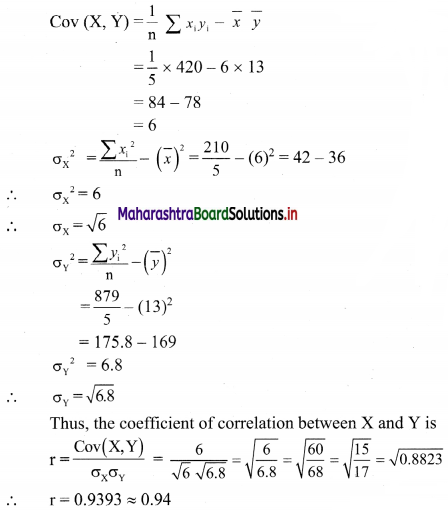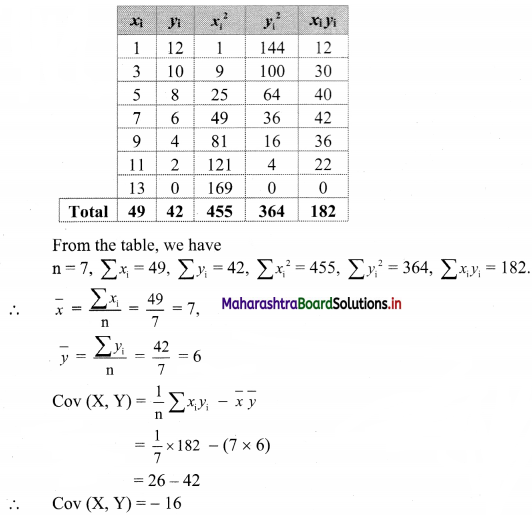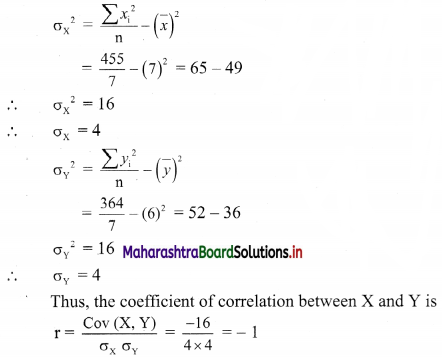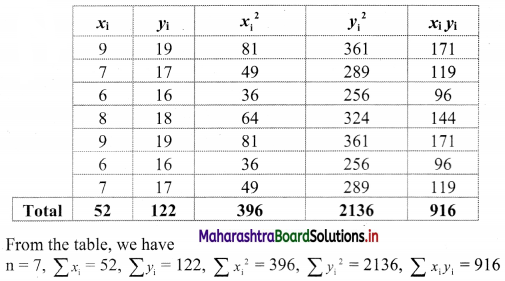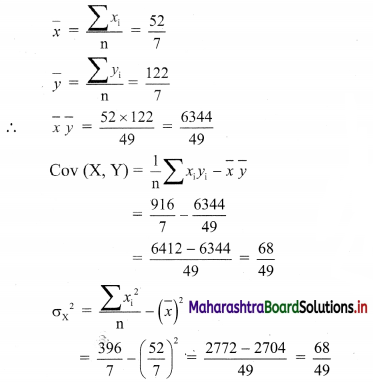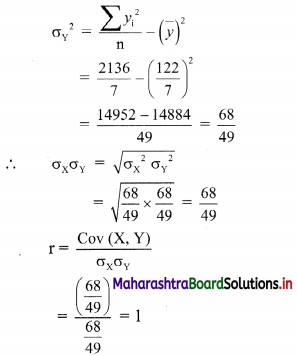Probability Class 11 Commerce Maths 2 Chapter 7 Exercise 7.1 Answers Maharashtra Board
Balbharati Maharashtra State Board 11th Commerce Maths Solution Book Pdf Chapter 7 Probability Ex 7.1 Questions and Answers.
Std 11 Maths 2 Exercise 7.1 Solutions Commerce Maths
Question 1.
State the sample space and n(S) for the following random experiments.
(i) A coin is tossed twice. If a second throw results in a tail, a die is thrown.
(ii) A coin is tossed twice. If a second throw results in a head, a die is thrown, otherwise, a coin is tossed.
Solution:
(i) When a coin is tossed twice, the outcomes are HH, HT, TH, TT.
A coin is tossed twice and if the second throw results in a tail, a die is thrown.
Out of the above 4 possibilities, on second throw tail occurs in two cases only i.e., HT, TT.
∴ S = {HH, TH, HT1, HT2, HT3, HT4, HT5, HT6, TT1, TT2, TT3, TT4, TT5, TT6}
∴ n(S) = 14
(ii) When a coin is tossed twice, the outcomes are HH, HT, TH, TT.
Let A be the event that the second throw results in the head when a coin is tossed twice followed by a die is thrown.
∴ A = {HH1, HH2, HH3, HH4, HH5, HH6, TH1, TH2, TH3, TH4, TH5, TH6}
The remaining outcomes i.e., HT, TT are followed by the tossing of a coin.
Let us consider this as event B.
∴ B = {HTT, HTH, TTT, TTH}
The sample space S of the experiment is A ∪ B.
∴ S = {HH1, HH2, HH3, HH4, HH5, HH6, TH1, TH2, TH3, TH4, TH5, TH6, HTT, HTH, TTT, TTH}
∴ n(S) = 16

Question 2.
In a bag, there are three balls; one black, one red, and one green. Two balls are drawn one after another with replacement. State sample space and n(S).
Solution:
The bag contains 3 balls out of which one is black (B), one is red (R) and the other one is green (G).
Two balls are drawn one after the other, with replacement, from the bag.
∴ the sample space S is given by
S = {BB, BR, BG, RB, RR, RG, GB, GR, GG}
∴ n(S) = 9
Question 3.
A coin and die are tossed. State sample space of following events.
(i) A: Getting a head and an even number.
(ii) B: Getting a prime number.
(iii) C: Getting a tail and perfect square.
Solution:
When a coin and a die are tossed the sample space S is given by
S = {H1, H2, H3, H4, H5, H6, T1, T2, T3, T4, T5, T6}
(i) A: getting a head and an even number
∴ A = {H2, H4, H6}
(ii) B: getting a prime number
∴ B = {H2, H3, H5, T2, T3, T5}
(iii) C: getting a tail and a perfect square.
∴ C = {T1, T4}
Question 4.
Find the total number of distinct possible outcomes n(S) for each of the following random experiments.
(i) From a box containing 25 lottery tickets and 3 tickets are drawn at random.
(ii) From a group of 4 boys and 3 girls, any two students are selected at random.
(iii) 5 balls are randomly placed into five cells, such that each cell will be occupied.
(iv) 6 students are arranged in a row for photographs.
Solution:
(i) Let S be the event that 3 tickets are drawn at random from 25 tickets
∴ 3 tickets can be selected in 25C3 ways
∴ n(S) = 25C3
= \(\frac{25 \times 24 \times 23}{3 \times 2 \times 1}\)
= 2300
(ii) There are 4 boys and 3 girls i.e., 7 students.
2 students can be selected from these 7 students in 7C2 ways.
∴ n(S) = 7C2
= \(\frac{7 \times 6}{2 \times 1}\)
= 21
(iii) 5 balls have to be placed in 5 cells in such a way that each cell is occupied.
∴ The first ball can be placed into one of the 5 cells in 5 ways, the second ball placed into one of the remaining 4 cells in 4 ways.
Similarly, the third, fourth, and fifth balls can be placed in 3 ways, 2 ways, and 1 way, respectively.
∴ a total number of ways of filling 5 cells such that each cell is occupied = 5!
= 5 × 4 × 3 × 2 × 1
= 120
∴ n(S) = 120
(iv) Six students can be arranged in a row for a photograph in 6P6 = 6! ways.
∴ n(S) = 6!
= 6 × 5 × 4 × 3 × 2 × 1
= 720

Question 5.
Two dice are thrown. Write favourable outcomes for the following events.
(i) P: The sum of the numbers on two dice is divisible by 3 or 4.
(ii) Q: sum of the numbers on two dice is 7.
(iii) R: sum of the numbers on two dice is a prime number.
Also, check whether
(a) events P and Q are mutually exclusive and exhaustive.
(b) events Q and R are mutually exclusive and exhaustive.
Solution:
When two dice are thrown, all possible outcomes are
S = {(1, 1), (1, 2), (1, 3), (1, 4), (1, 5), (1, 6), (2, 1), (2, 2), (2, 3), (2, 4), (2, 5), (2, 6), (3, 1), (3, 2), (3, 3), (3, 4), (3, 5), (3, 6), (4, 1), (4, 2), (4, 3), (4, 4), (4, 5), (4, 6), (5, 1), (5, 2), (5, 3), (5, 4), (5, 5), (5, 6), (6, 1), (6, 2), (6, 3), (6, 4), (6, 5), (6, 6)}
(i) P: sum of the numbers on two dice is divisible by 3 or 4.
∴ P = {(1, 2), (1, 3), (1, 5), (2, 1), (2, 2), (2, 4), (2, 6), (3, 1), (3, 3), (3, 5), (3, 6), (4, 2), (4, 4), (4, 5), (5, 1), (5, 3), (5, 4), (6, 2), (6, 3), (6, 6)}
(ii) Q: sum of the numbers on two dice is 7.
∴ Q = {(1, 6), (2, 5), (3, 4), (4, 3), (5, 2), (6, 1)}
(iii) R: sum of the numbers on two dice is a prime number.
∴ R = {(1, 1), (1, 2), (1, 4), (1, 6), (2, 1), (2, 3), (2, 5), (3, 2), (3, 4), (4, 1), (4, 3), (5, 2), (5, 6), (6, 1), (6, 5)}
(a) P and Q are mutually exclusive events as P ∩ Q = φ and
P ∪ Q = {(1, 2), (1, 3), (1, 5), (1, 6), (2, 1), (2, 2), (2, 4), (2, 5), (2, 6), (3, 1), (3, 3), (3, 4), (3, 5), (3, 6), (4, 2), (4, 3), (4, 4), (4, 5), (5, 1), (5, 2), (5, 3), (5, 4), (6, 1), (6, 2), (6, 3), (6, 6)} ≠ S
∴ P and Q are not exhaustive events as P ∪ Q ≠ S.
(b) Q ∩ R = {(1, 6), (2, 5), (3, 4), (4, 3), (5, 2), (6, 1)}
∴ Q ∩ R ≠ φ
Also, Q ∪ R = {(1, 1), (1, 2), (1, 4), (1, 6), (2, 1), (2, 3), (2, 5), (3, 2), (3, 4), (4, 1), (4, 3), (5, 2), (5, 6), (6, 1), (6, 5)} ≠ S
∴ Q and R are neither mutually exclusive nor exhaustive events.
Question 6.
A card is drawn at random from an ordinary pack of 52 playing cards. State the number of elements in the sample space, if
consideration of suits
(i) is not taken into account.
(ii) is taken into account.
Solution:
(i) If consideration of suits is not taken into account, then one card can be drawn from the pack of 52 playing cards in 52C1 = 52 ways.
∴ n(S) = 52
(ii) If consideration of suits is taken into account, then one card can be drawn from each suit in 13C1 × 4C1
= 13 × 4
= 52 ways.
∴ n(S) = 52
Question 7.
Box-I contains 3 red (R11, R12, R13) and 2 blue (B11, B12) marbles while Box-II contains 2 red (R21, R22) and 4 blue (B21, B22, B23, B24) marbles. A fair coin is tossed. If the coin turns up heads, a marble is chosen from Box-I; if it turns up tails, a marble is chosen from Box-II. Describe the sample space.
Solution:
Box I contains 3 red and 2 blue marbles i.e., (R11, R12, R13, B11, B12)
Box II contains 2 red and 4 blue marbles i.e., (R21, R22, B21, B22, B23, B24)
It is given that a fair coin is tossed and if a head comes then marble is chosen from box I otherwise it is chosen from box II
∴ the sample space is
S = {(H, R11), (H, R12), (H, R13), (H, B11), (H, B12), (T, R21), (T, R22), (T, B21), (T, B22), (T, B23), (T, B24)}

Question 8.
Consider an experiment of drawing two cards at random from a bag containing 4 cards marked 5, 6, 7, and 8. Find the sample space, if cards are drawn
(i) with replacement
(ii) without replacement.
Solution:
The bag contains 4 cards marked 5, 6, 7, and 8.
Two cards are to be drawn from this bag.
(i) If the two cards are drawn with replacement, then the sample space is
S = {(5, 5), (5, 6), (5, 7), (5, 8), (6, 5), (6, 6), (6, 7), (6,8), (7, 5), (7, 6), (7, 7), (7, 8), (8, 5), (8, 6), (8, 7), (8, 8)}
(ii) If the two cards are drawn without replacement, then the sample space is
S = {(5, 6), (5, 7), (5, 8), (6, 5), (6, 7), (6, 8), (7, 5), (7, 6), (7, 8), (8, 5), (8, 6), (8, 7)}
11th Commerce Maths Digest Pdf

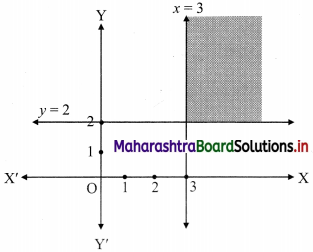
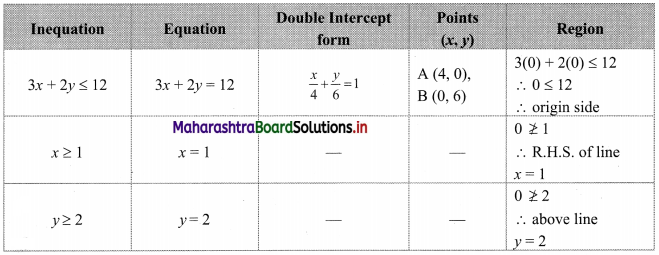
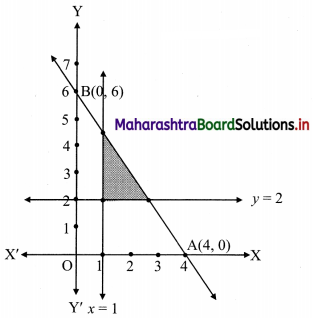
![]()
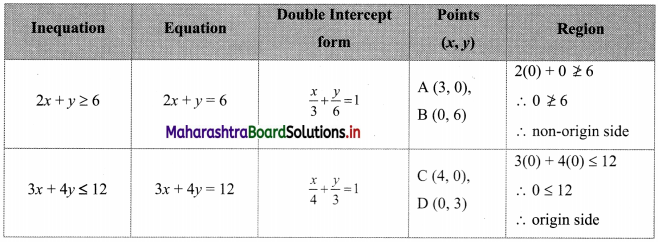
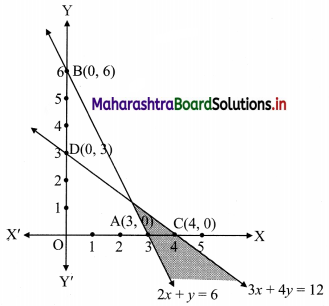


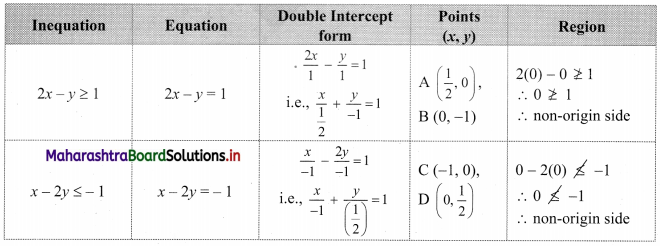
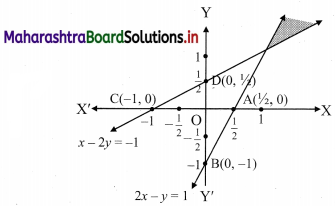
![]()
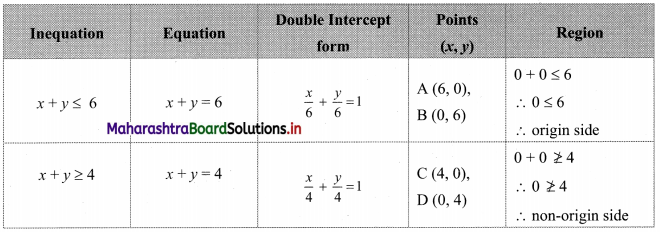
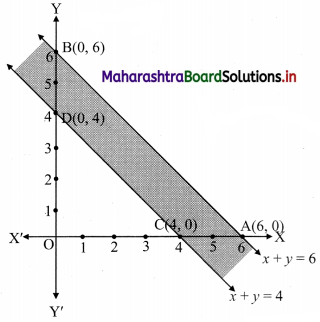
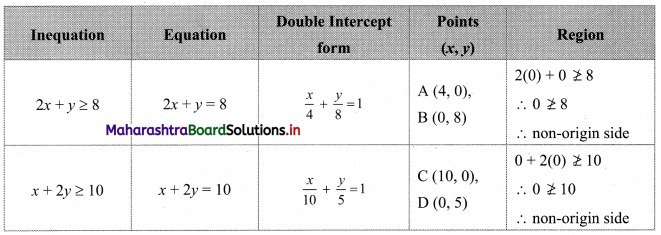
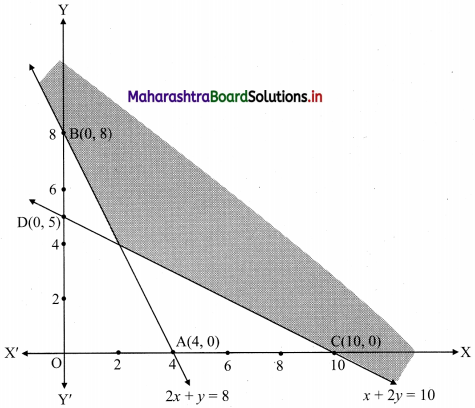

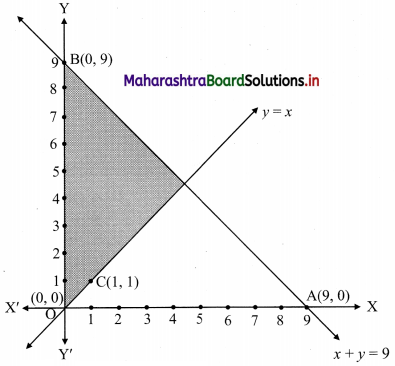
![]()
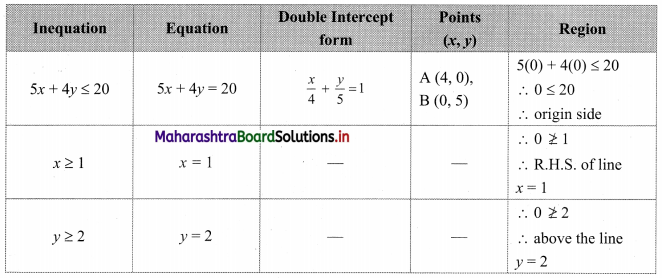
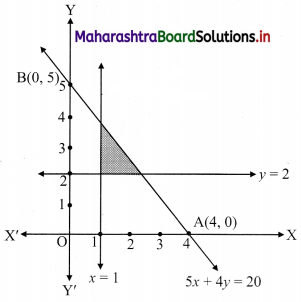
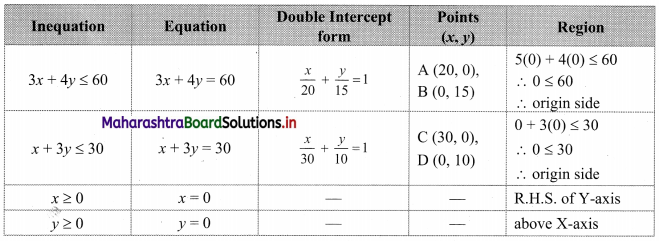
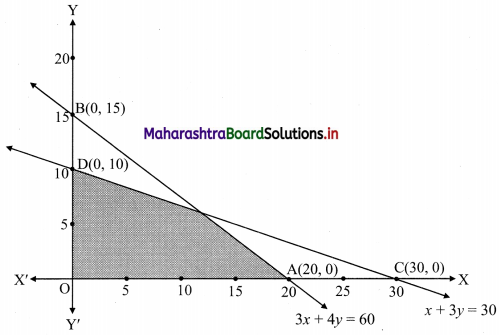
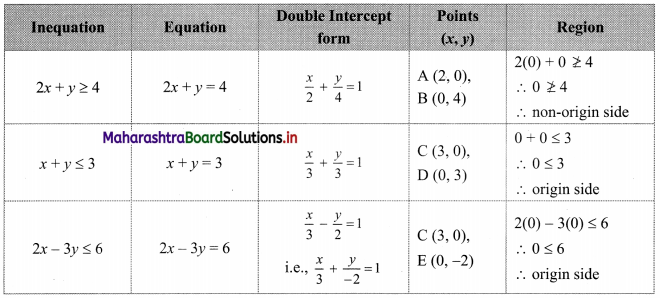
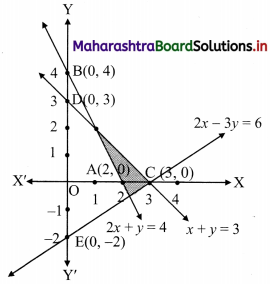
![]()
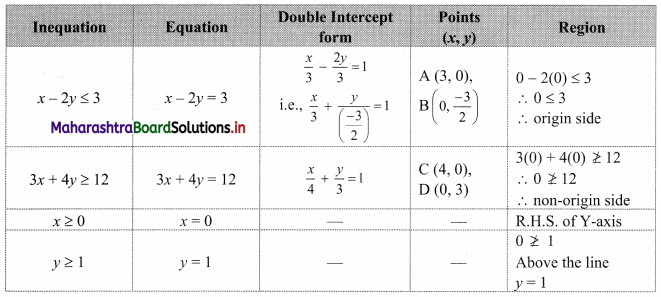
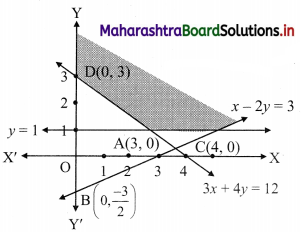
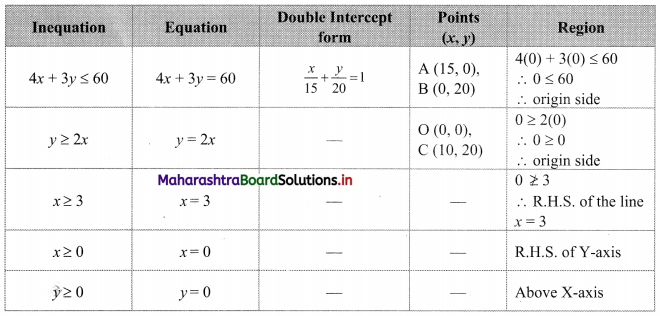
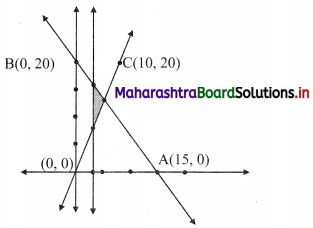
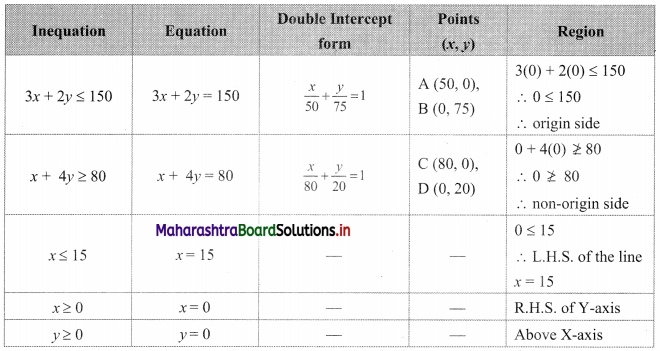
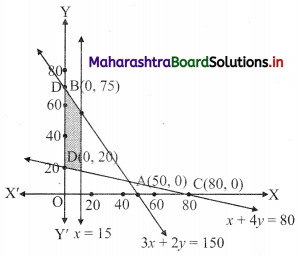
![]()
